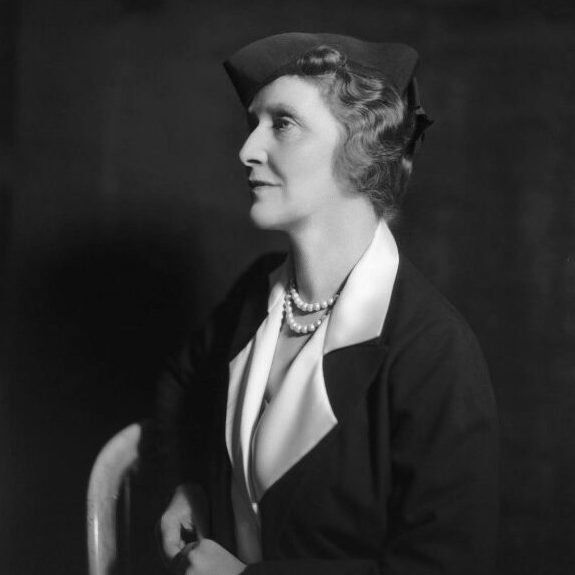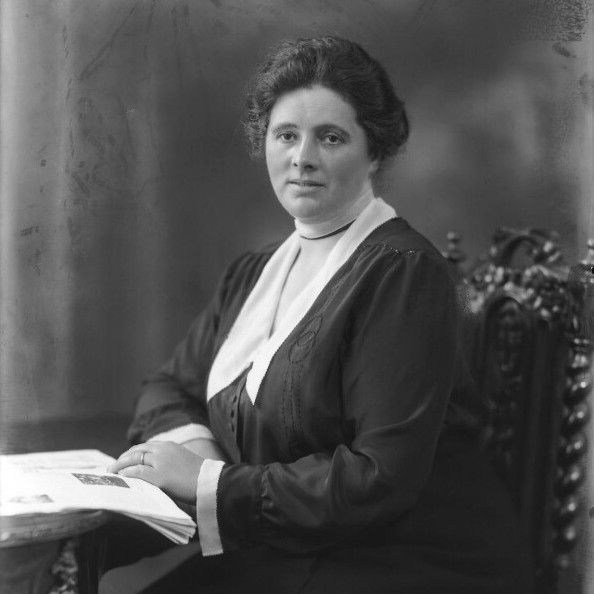Margaret Wintringham: The first female Liberal MP and third woman elected to Parliament
In Death at Crookham Hall, a by-election leads to the fictional Mrs Sybil Siddons becoming the third woman to take a seat in the House of Commons in 1920.
In real life, 100 years ago, on 22 September 1921, Margaret Wintringham (1879 -1955), pictured above, became the third woman to be elected as a Member of Parliament, winning the Louth by-election.
She was the first British-born woman to become a Member of Parliament and the first-ever female Liberal MP. She won by 791 votes, with a large turnout of women constituents voting for the first time.
Before Margaret won her seat, Constance Markievicz, an Irish politician, revolutionary, nationalist, suffragist and socialist, had won a seat in Dublin St Patrick's constituency in the 1918 General Election.
But Constance was a member of Sinn Féin and, in accordance with their abstentionist policy, didn’t take her seat in the House of Commons. She was also in Holloway Prison at the time, jailed for her part in anti-conscription activities.
American-born Lady Nancy Astor was the first woman to sit as an MP in the House of Commons, winning the Plymouth Sutton by-election for the Conservatives on 28 November 1919 with more votes than the Labour and Liberal candidates combined.
See my post: Who were the first female Members of Parliament in Britain?

Lady Nancy Astor 1879 - 1964
Like the fictional Mrs Siddons, Margaret Wintringham (née Longbottom) was born in Yorkshire in the West Riding. She worked as a teacher, becoming headmistress of a school in Grimsby. In 1903, she married Thomas Wintringham, a timber merchant.
When her husband was elected as MP for Louth in Lincolnshire, she moved with him from Grimsby to Louth. Thomas Wintringham died unexpectedly in 1921, and Margaret was selected as the Liberal candidate to replace him.
Margaret supported women’s suffrage and was a member of the National Union of Women's Suffrage Societies. Like Lady Astor, she campaigned for giving women the vote on the same terms as men. At that time, only women over the age of 30 who met property qualifications were allowed to vote. She also campaigned for equal pay for women, state scholarships for girls as well as boys, and women-only railway carriages.
When Margaret wone her seat, Lady Astor sent her a telegram saying, "Rejoicing over your victory, shall welcome you in the House of Commons."
Despite being on opposing sides, the two women formed a lifelong friendship, sharing many interests and supporting many of the same causes. Both lobbied parliament for the reintroduction of women police officers.
During the First World War, a voluntary force known as the Women's Police Volunteers, later the Women's Police Service, was established - see my post: Who were the first female detectives in Britain? After the war, the Women's Police Service had been disbanded.
Margaret was an active speaker in the House of Commons, and her greatest parliamentary achievement was perhaps the Equal Guardianship Act. Before 1925, fathers were the legal guardians of their children and mothers were denied custody.
When introducing a private members bill to the House of Commons in 1924, she said, “I realise I am addressing chiefly men and I want them for a few minutes, in considering the position of the law as it stands at present, to take a mental somersault. I want them to view it from the standpoint of the woman who passionately desires the guardianship of her own child.”
The Equal Guardianship Act was passed in 1925, enshrining into law the principle of equal guardianship between mothers and fathers.
Margaret won two General Elections in 1922 and 1923. Despite losing her seat in 1924, she stayed politically active in women’s organisations and the Liberal party until her death at the age of 76 in 1955.
Margaret Wintringham was known to be practical in manner and dress, unlike my fictional MP, Mrs Siddons, who is pilloried in the press for her love of silk dresses and expensive jewellery.

